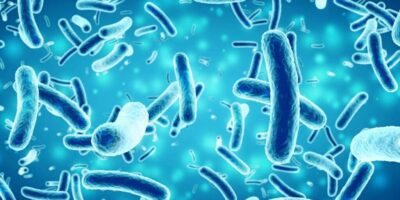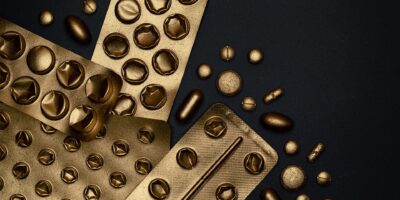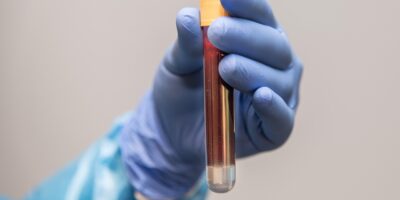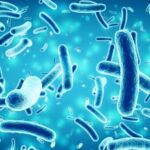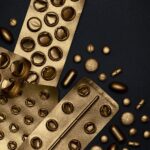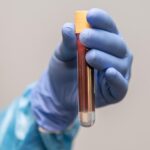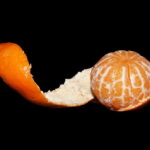What are organoids?
Organoids are small, 3D tissue structures that can be used as models in studies. Unlike animal testing, human cells can be used to create organoids that provide an accurate model to humans or a specific individual. This would allow research to move away from animal models as well as enable patient specific testing.
Current methods for creating organoids have limitations that make it difficult to upscale production without compromising the consistency of organoids produced. Microwells and hanging drops offer better size control than hydrogels or low-adherence materials, but cannot be effectively upscaled. Conventional chip-based microfluidics also offer good size control, but use oil and surfactants that can affect cell behaviour. Additionally, current methods cannot effectively store a large amount of organoids in one place without risking them merging together, creating more variation in organoids produced.
IAMF : In-air microfluidics
The triple jet IAMF method explored in this paper encases the cells in a permeable microcapsule, preventing organoid merging while allowing cells to respond to chemical signals and differentiate. Because it uses a continuous stream of liquid, it has a much higher throughput than conventional methods that offer the same amount of size control.
The creation of microcapsules is based on in-air microfluidics (IAMF), marangoni-driven spreading of liquids and the use of a rapid crosslinking material, in this case alginate. If a liquid of lower surface tension comes into contact with one with higher surface tension, it will spread over it. If the liquid with higher surface tension is a droplet, the second liquid will encase the droplet. Using a vibrating nozzle, a stream of uniform particles can be produced. These can then be encased using additional jets of liquid with a lower surface tension. To give the droplets structure, this study makes use of alginate crosslinking. Calcium is added to the first and third solutions, while alginate is added to the second solution. When they come into contact with each other, the calcium starts linking the alginate particles together and forms the alginate-calcium shell from both the inside and outside. This extra stability from the third layer prevents the microcapsules from merging, as seen in previous techniques with 2 streams.
Using brightfield microscopy, the researchers found that microcapsules of different size and number of cores can be achieved by varying the size and vibration frequency of the first nozzle. Other shapes, like microfibers and microbuckets, can be produced by varying the distance the third nozzle is from the stream. The efficiency of microcapsule formation is also affected by the rate of crosslinking, which is directly proportional to concentration of calcium in first and second solutions. This data could be then applied to the creation of future microcapsules to optimise their output.
The researchers then explored the possibility of applying these microcapsules as compartments for organoid creation by adding fibroblast 3T3 and human pluripotent stem cells (hPSCs) into the first jet, allowing the cells to be encapsulated within the microcapsule.
Adding cells
The fibroblast cell line 3T3 was used to study the cell survivability and microcapsule properties. 14 days after 3T3 cells were encapsulated in alginate, cell viability was determined through staining to differentiate live and dead cells then visualising it via fluorescent microscopy. The cells showed excellent viability, with 91±4% of cells being alive.
The oil content of microcapsules created by triple jet IAMF and chip-based microfluidics were also compared by staining the oil and using spectrophotometry to determine the oil content. The microcapsules created with the IAMF method had the same absorbance as the control while microcapsules made with the chip-based approach had a higher absorbance due to the presence of oil, even after three washes.
Through a Dextran-FITC assay, it was shown that the microcapsule had very good permeability, allowing molecules up to 2000kDa to pass through. This would allow nutrients and chemical signals to reach the cell, which is important for organoid production that depends on cell differentiation through chemical signalling.
Lumenogensis
While the 3T3 cells were used for general survivability, the ability for cells to form structures were tested through the addition of hPSCs. In the first test, researchers were looking at the cells’ ability to undergo lumenogenesis and form embryoid bodies (EBs). Within 6 days, 92±1% of encapsulated hPSCs condensed and formed EBs. This was further confirmed by staining and imaging it with fluorescent confocal microscopy, allowing for the columnar epithelium and cavity to be visualised, confirming lumenogenesis.
These EBs were then compared to hPSCs cultured using general conditions. First, pluripotency markers Oct3/4 and Sox2 were stained and imaged with fluorescent confocal microscopy, the encapsulated and conventionally formed EBs had almost the same rates of expression. Overall gene expression was determined by single-cell RNA sequencing of both EBs and showed that both had similar transcription rates for naive and primed pluripotency markers, with encapsulated cells transcribing more markers associated with primed pluripotent cells than conventional EBs. The similar transcription suggests encapsulated EBs rival the quality of conventionally formed EBs.
Cardiospheres
After EB tests, the researchers created cardiospheres, a type of organoid, to see if more complex structures can be formed within a microcapsule. To create the cardiospheres, mesoderm and cardiac differentiation medium were added to aggregated hPSCs. These hPSCs were genetically engineered and expressed mCherry, enhanced GFP and mRubyll with the MESP1, NKX2-5, and ACTN2 genes respectively. By dissociating the encapsulated hPSCs cultured for 22 days and conducting FACS, researchers determined that 94.3 ± 0.5% of cells were expressing NKX2-5/eGFP that’s involved in heart development. Single cell RNA seq was again performed on encapsulated cardiospheres as well as ones created conventionally in cell wells to compare the cells produced by both methods. Cells created by both methods showed a high degree of similarity, this includes both cells transcribing more cardiac markers and less pluripotency markers due to differentiation. This suggests a high success rate of cardiosphere formation when encapsulating cells.
To test cardiosphere functionality, cardiospheres were placed on electrodes to stimulate and measure responses from them.
The cardiospheres were stained with Fluo-4 AM and imaged via fluorescent microscopy to measure calcium fluxes, which happens together with muscle contractions. The measured fluxes were in sync with the electrical stimulation of cardiospheres, affirming that cardiospheres responded to electrical stimuli like heart tissue.
Additionally, time-resolved FM was used to measure sarcomere contraction. The alpha-actin in the z-lines of each sarcomere are attached to mRubyll, so the distance between adjacent z-lines would be the sarcomere length. The contraction can then be measured by visualising the mRubyll through fluorescence when the cardiospheres are stimulated. The amount the cardispheres contracted (to 82±9% original length) also matches cardiospheres in precious literature, proving created cardiospheres are behaving normally.
Summary
These experiments provide the basis for a new method that has increased throughput of microcapsules, homogeneity and control over size and no additional oil or surfactants that can contaminate cells. The easier production and increased consistency in organoids would make it more accessible and suitable for industries that require a large amount of organoids.
Article: van Loo B, ten Den SA, Araújo-Gomes N, de Jong V, Snabel RR, Schot M, et al. Mass production of lumenogenic human embryoid bodies and functional cardiospheres using in-air-generated microcapsules. Nat Commun. 2023 Oct 21;14(1):6685.
Cover Image: Water Drop Selective-focus Photography by Ali Hassan

